 W
WAnchiornithidae is a family of eumaniraptorans which could be the basalmost family of birds in the clade Avialae. Anchiornithids have been classified at varying positions in the maniraptoran tree, with some scientists classifying them as a distinct family, a basal subfamily of Troodontidae, members of Archaeopterygidae, or an assemblage of dinosaurs that are an evolutionary grade within Avialae or Paraves.
 W
WCaptorhinidae is one of the earliest and most basal reptile families, all members of which are extinct.
 W
WClevosaurs are an extinct group of rhynchocephalian reptiles from the Triassic and Jurassic periods.
 W
WCoelophysidae is a family of primitive carnivorous theropod dinosaurs. Most species were relatively small in size. The family flourished in the Late Triassic and Early Jurassic periods, and has been found on numerous continents. Many members of Coelophysidae are characterized by long, slender skulls and light skeletons built for speed. One member, Coelophysis, displays the earliest known furcula in a dinosaur.
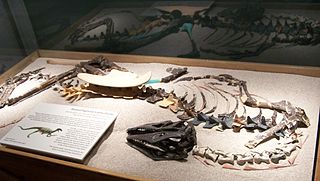 W
WCoeluridae is a historically unnatural group of generally small, carnivorous dinosaurs from the late Jurassic Period. For many years, any small Jurassic or Cretaceous theropod that did not belong to one of the more specialized families recognized at the time was classified with the coelurids, creating a confusing array of 'coelurid' theropods that were not closely related. Although they have been traditionally included in this family, there is no evidence that any of these primitive coelurosaurs form a natural group with Coelurus, the namesake of Coeluridae, to the exclusion of other traditional coelurosaur groups.
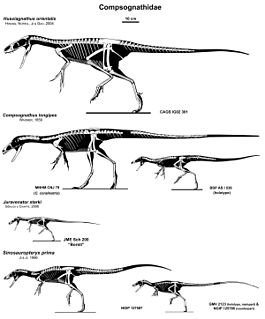 W
WCompsognathidae is a family of coelurosaurian theropod dinosaurs. Compsognathids were small carnivores, generally conservative in form, hailing from the Jurassic and Cretaceous Periods. The bird-like features of these species, along with other dinosaurs such as Archaeopteryx inspired the idea for the connection between dinosaur reptiles and modern-day avian species. Compsognathid fossils preserve diverse integument — skin impressions are known from four genera commonly placed in the group, Compsognathus, Sinosauropteryx, Sinocalliopteryx, and Juravenator. While the latter three show evidence of a covering of some of the earliest primitive feathers over much of the body, Juravenator and Compsognathus also show evidence of scales on the tail or hind legs.
 W
WDilophosauridae is a family of medium to large sized theropod dinosaurs. The name Dilophosauridae is derived from Greek, with “di-” meaning “two,” “lophos” meaning “crest,” “sauros” meaning “lizard,” and “-idae” meaning “family”. While the name suggests that all dilophosaurids have two crests, this is not applicable to all dilophosaurids. The Dilophosauridae is anchored by its type genus, Dilophosaurus, and therefore the name comes from the distinctive two crests of the genus.
 W
WDolichosauridae is a family of Late Cretaceous aquatic varanoid lizards closely related to the mosasaurs. The family contains seven genera.
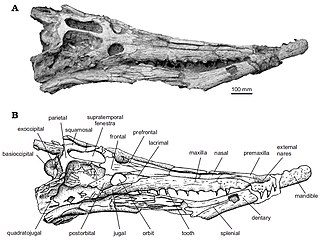 W
WDyrosauridae is a family of extinct neosuchian crocodyliforms that lived from the Late Cretaceous (Maastrichtian) to the Eocene. Dyrosaurid fossils are globally distributed, having been found in Africa, Asia, Europe, North America and South America. Over a dozen species are currently known, varying greatly in overall size and cranial shape. All were presumably aquatic, with species inhabiting both freshwater and marine environments. Ocean-dwelling dyrosaurids were among the few marine reptiles to survive the Cretaceous–Paleogene extinction event.
 W
WEndennasaurus is an extinct genus of thalattosaurian from the Upper Triassic of Italy. It was found in and named after the Endenna cave, composed of Zorzino Limestone in Lombardia.
 W
WErythrosuchidae are a family of large basal archosauriform carnivores that lived from the later Early Triassic (Olenekian) to the early Middle Triassic (Anisian).
 W
WEuparkeriidae is an extinct family of small carnivorous archosauriforms which lived from the Early Triassic to the Middle Triassic (Anisian). While most other early archosauriforms walked on four limbs, euparkeriids were probably facultative bipeds that had the ability to walk on their hind limbs at times. The most well known member of Euparkeriidae is the species Euparkeria capensis, which was named by paleontologist Robert Broom from the Karoo Basin of South Africa in 1913 and is known from several nearly complete skeletons. The family name was first proposed by German paleontologist Friedrich von Huene in 1920; Huene classified euparkeriids as members of Pseudosuchia, a traditional name for crocodilian-line archosaurs from the Triassic. However, phylogenetic analyses performed in the 21st century place Euparkeriidae as a group of Archosauriformes, a position outside Pseudosuchia and close to the ancestry of both crocodile-line archosaurs and bird-line archosaurs. However, they are probably not direct ancestors of archosaurs.
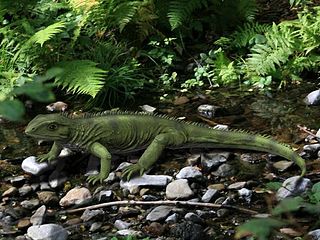 W
WGephyrosauridae was a family of sphenodonts that lived in the Late Triassic and Early Jurassic. The members of Gephyrosauridae were named lepidosaurs in 1985 by Michael Benton.
 W
WHallopodidae is a family of Late Jurassic crocodylomorphs. They have been recovered as the closest relatives of the Crocodyliformes.
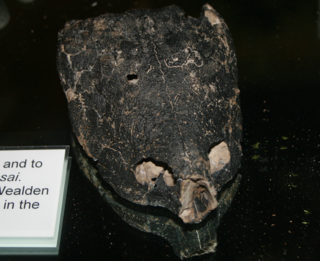 W
WThe Helochelydridae are an extinct family of stem-turtles known from fossils found in North America and Europe that have been dated from the Late Jurassic to the Late Cretaceous. Although referred to as Solemydidae in recent literature on extinct turtles, Helochelydridae has priority over Solemydidae. They are thought to be terrestrial, based on the presence of limb osteoderms and bone histology. Their skull morphology is dissimilar to that of extant tortoises, suggesting an omnivorous habit similar to that of box turtles.
 W
WHenodontidae is an extinct family of superficially turtle-like placodonts belonging to the superfamily Cyamodontoidea. Fossils have been found in Germany and Spain.
 W
WHerrerasauridae is a family of carnivorous basal saurischian dinosaurs. They are among the oldest known dinosaurs, first appearing in the fossil record around 233.23 million years ago, before becoming extinct by the end of the Triassic period. Herrerasaurids were relatively small-sized dinosaurs, normally no more than 4 metres (13 ft) long, although the holotype specimen of "Frenguellisaurus ischigualastensis" is thought to have reached around 6 meters long. The best known representatives of this group are from South America, where they were first discovered in the 1930s in relation to Staurikosaurus and 1960s in relation to Herrerasaurus. A nearly complete skeleton of Herrerasaurus ischigulastensis was discovered in the Ischigualasto Formation in San Juan, Argentina, in 1988. Less complete possible herrerasaurids have been found in North America, and they may have inhabited other continents as well.
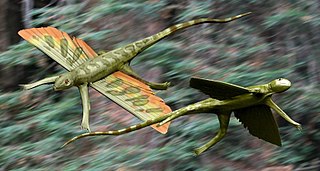 W
WKuehneosauridae is an extinct family of small, lizard-like gliding diapsids known from the Triassic period of Europe and North America. They are often, but not always, placed in the group Lepidosauromorpha.
 W
WThe Lagerpetidae is a family of basal avemetatarsalians often considered the earliest-diverging dinosauromorphs. Lagerpetid fossils are known from Late Triassic of Argentina, Arizona, Brazil, Madagascar, New Mexico, and Texas. They were typically small, although some lagerpetids, like Dromomeron gigas and an unnamed taxon from the Santa Rosa Formation, were able to get quite large. Their fossils are rare; the most common finds are bones of the hindlimbs, which possessed a number of unique features.
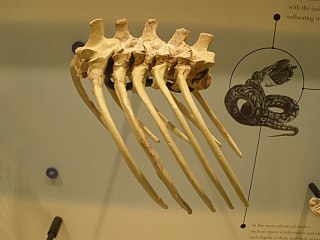 W
WMadtsoiidae is an extinct family of mostly Gondwanan snakes with a fossil record extending from early Cenomanian to late Pleistocene strata located in South America, Africa, India, Australia and Southern Europe. Madtsoiid snakes include very primitive snakes, which like extant boas and pythons would likely dispatch their prey by constriction, such as Gigantophis, one of the longest snakes known at an estimated 10.7 metres (35 ft), and the Australian Wonambi and Yurlunggur. As a grouping of basal forms the composition and even the validity of Madtsoiidae is in a state of flux as new pertinent finds are described.
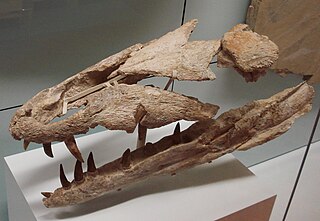 W
WMetriorhynchidae is an extinct family of specialized, aquatic metriorhynchoid crocodyliforms from the Middle Jurassic to the Early Cretaceous period of Europe, North America and South America. The name Metriorhynchidae was coined by the Austrian zoologist Leopold Fitzinger in 1843. The group contains two subfamilies, the Metriorhynchinae and the Geosaurinae.
 W
WNycteroleteridae is a family of procolophonian parareptilians from the Middle to Late Permian of Russia and North America. They are sometimes classified as a sister group to pareiasaurids. The group includes the genera Macroleter, Bashkyroleter, "Bashkyroleter" mesensis, Nycteroleter, Emeroleter, and probably Rhipaeosaurus. They were carnivorous, and occasionally ate insects. The group was most common in European Russia, with only a few fossils in North America. One fossil has also been found in Africa, but this is the only one from Gondwana.
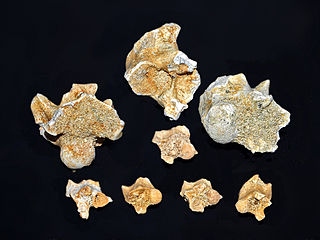 W
WPalaeophiidae is an extinct family of marine snake within the infraorder Alethinophidia.
 W
WParasuchidae is a clade of phytosaurs more derived than Diandongosuchus.
 W
WPlacochelyidae is an extinct family of placodonts belonging to the superfamily Cyamodontoidea.
 W
WPleurosauridae is a family of extinct marine diapsid reptiles belonging to the group Sphenodontia. Fossils from this family have been discovered in Bavaria, Germany from the Toarcian and Tithonian. Pleurosaurs became gradually adapted to an aquatic lifestyle, with the semiaquatic Palaeopleurosaurus being less specialised than the fully marine Pleurosaurus. At least the former appears to have had a much more reduced lifespan compared to the modern tuatara.
 W
WPleurosternidae is an extinct family of turtles. They are definitively known from the Late Jurassic to Early Cretacous.(Albian)
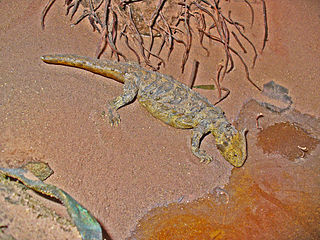 W
WProcolophonidae is an extinct family of parareptiles from the Permian and Triassic periods.
 W
WProterosuchidae is an early, possibly paraphyletic, assemblage of basal archosauriformes whose fossils are known from the Latest Permian and the Early Triassic of Europe, Asia, Africa, Australia and possibly South America. The name comes from Greek πρότερο- ("first") and σοῦχος ("crocodile").
 W
WProtorothyrididae is an extinct family of small, lizard-like reptiles. Their skulls did not have fenestrae, as is also true of modern turtles and tortoises. Protorothyridids lived from the Late Carboniferous to Early Permian periods, in what is now North America. Many genera of primitive reptiles were thought to be protorothyridids. Brouffia, Coelostegus, Paleothyris and Hylonomus, for example, were recently found to be more basal eureptiles.
 W
WProtostegidae is a family of extinct marine turtles that lived during the Cretaceous period. The family includes some of the largest sea turtles that ever existed. The largest, Archelon, had a head one metre (39 in) long. Like most sea turtles, they had flattened bodies and flippers for front appendages; protostegids had minimal shells like leatherback turtles of modern times.
 W
WScansoriopterygidae is an extinct family of climbing and gliding maniraptoran dinosaurs. Scansoriopterygids are known from five well-preserved fossils, representing four species, unearthed in the Tiaojishan Formation fossil beds of Liaoning and Hebei, China.
 W
WSilesauridae is an extinct family of Triassic dinosauriforms. It is most commonly considered to be a clade of non-dinosaur dinosauriforms, and the sister group of dinosaurs. Some studies have instead suggested that most or all silesaurids comprised a paraphyletic grade of early dinosaurs ancestral to traditional ornithischians. Silesaurids have a consistent general body plan, with a fairly long neck and legs and possibly quadrupedal habits. However, they occupied a variety of ecological niches, with early silesaurids being carnivorous and later taxa having adaptations for specialized herbivory. As indicated by the contents of referred coprolites, Silesaurus may have been insectivorous, feeding selectively on small beetles and other arthropods.
 W
WTangasauridae is a family of eosuchian diapsids. Specimens have been found that are of Late Permian to Early Triassic in age from the Sakamena Group of western Madagascar. They lived alongside other taxa present from the Sakamena Group, including temnospondyls, rhynchosaurs, and gomphodont eucynodonts. Fossils have been found of numerous specimens of common members of this family such as Hovasaurus and Thadeosaurus in different stages of ontogenic development. Recent material from the Middle Sakamena Formation of the Morondava Basin of Madagascar that dates back to the early Triassic period suggests that the Tangasauridae were relatively unaffected by the Permian-Triassic extinction event.
 W
WTeleosauridae is a family of extinct typically marine crocodylomorphs similar to the modern gharial that lived during the Jurassic period. Teleosaurids were thalattosuchians closely related to the fully aquatic metriorhynchoids, but were less adapted to an open-ocean, pelagic lifestyle. The family was originally coined to include all the semi-aquatic thalattosuchians and was equivalent to the modern superfamily Teleosauroidea. However, as teleosauroid relationships and diversity was better studied in the 21st century, the division of teleosauroids into two distinct evolutionary lineages led to the establishment of Teleosauridae as a more restrictive family within the group, together with its sister family Machimosauridae.
 W
WTrilophosaurs are lizard-like Triassic allokotosaur reptiles related to the archosaurs. The best known genus is Trilophosaurus, a herbivore up to 2.5 metres long. It had a short, unusually heavily built skull, equipped with massive, broad flattened cheek teeth with sharp shearing surfaces for cutting up tough plant material. Teeth are absent from the premaxilla and front of the lower jaw, which in life were probably equipped with a horny beak.
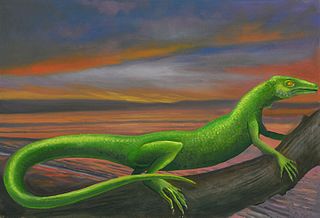 W
WYounginidae is an extinct family of diapsid reptiles from the Late Permian and Early Triassic. In a phylogenetic context, younginids are near the base of the clade Neodiapsida. Younginidae includes the species Youngina capensis from the Late Permian of South Africa and Thadeosaurus colcanapi from the Late Permian and Early Triassic of Madagascar. Heleosuchus griesbachi from the Late Permian of South Africa may also be a member of the family.